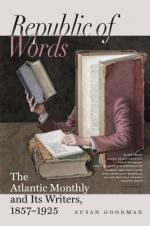“A few weeks after this pleasant interview, I had established my protege at Utica, and obtained him several commissions. But his medical attendant pronounced his disease incurable; he lingered a few months, conversing to the last, during the intervals of pain and feebleness, with a resignation and intelligence quite endearing. When he died, I advised his widow to preserve as long as possible the valuable collection he had left, and with it she repaired to one of her kindred in affluent circumstances, living fifty miles away. She endeavored to force upon my acceptance one, at least, of her husband’s cherished pictures; but, knowing her poverty, I declined, only stipulating that if ever she parted with the Stuart, I should have the privilege of taking it at her own price.
“A year passed, and I was informed that many of her best things had become the property of her relative, who, however, knew not how to appreciate them. I commissioned a friend, who knew him, to purchase at any cost the one I craved. He discovered that a native artist, who had been employed to delineate the family, had obtained this work in payment, and had it carefully enshrined in his studio at Syracuse. This was Charles Elliot; and the possession of so excellent an original by one of the best of our artists in this department explains his subsequent triumphs in portraiture. He made a study of this trophy; it inspired his pencil; from its contemplation he caught the secret of color, the breadth and strength of execution, which have since placed him among the first of American portrait-painters, especially for old and characteristic heads. Thus, in the centre of Western New York, he found his Academy, his Royal College, his Gallery and life-school, in one adequate effort of Stuart’s masterly hand; the offering of gratitude became the model and the impulse whereby a farmer’s son on the banks of the Mohawk rose to the highest skill and eminence. But this was a gradual process; and meantime it is easy to imagine what a treasure the picture became in his estimation. It was only by degrees that his merit gained upon public regard. His first visit to New York was a failure; and after waiting many weeks in vain for a sitter, he was obliged to pay his indulgent landlord with a note of hand, and return to the more economical latitude of Syracuse. There he learned that a wealthy trader, desirous of the eclat of a connoisseur, was resolved to possess the cherished portrait. Although poor, he was resolved never to part with it; but the sagacious son of Mammon was too keen for him; discovering his indebtedness, he bought the artist’s note of the inn-keeper, and levied an execution upon his effects. But genius is often more than a match for worldly-wisdom. Elliot soon heard of the plot, and determined to defeat it. He worked hard and secretly, until he had made so good a copy that the most practised eye alone could detect the counterfeit; and then concealing




